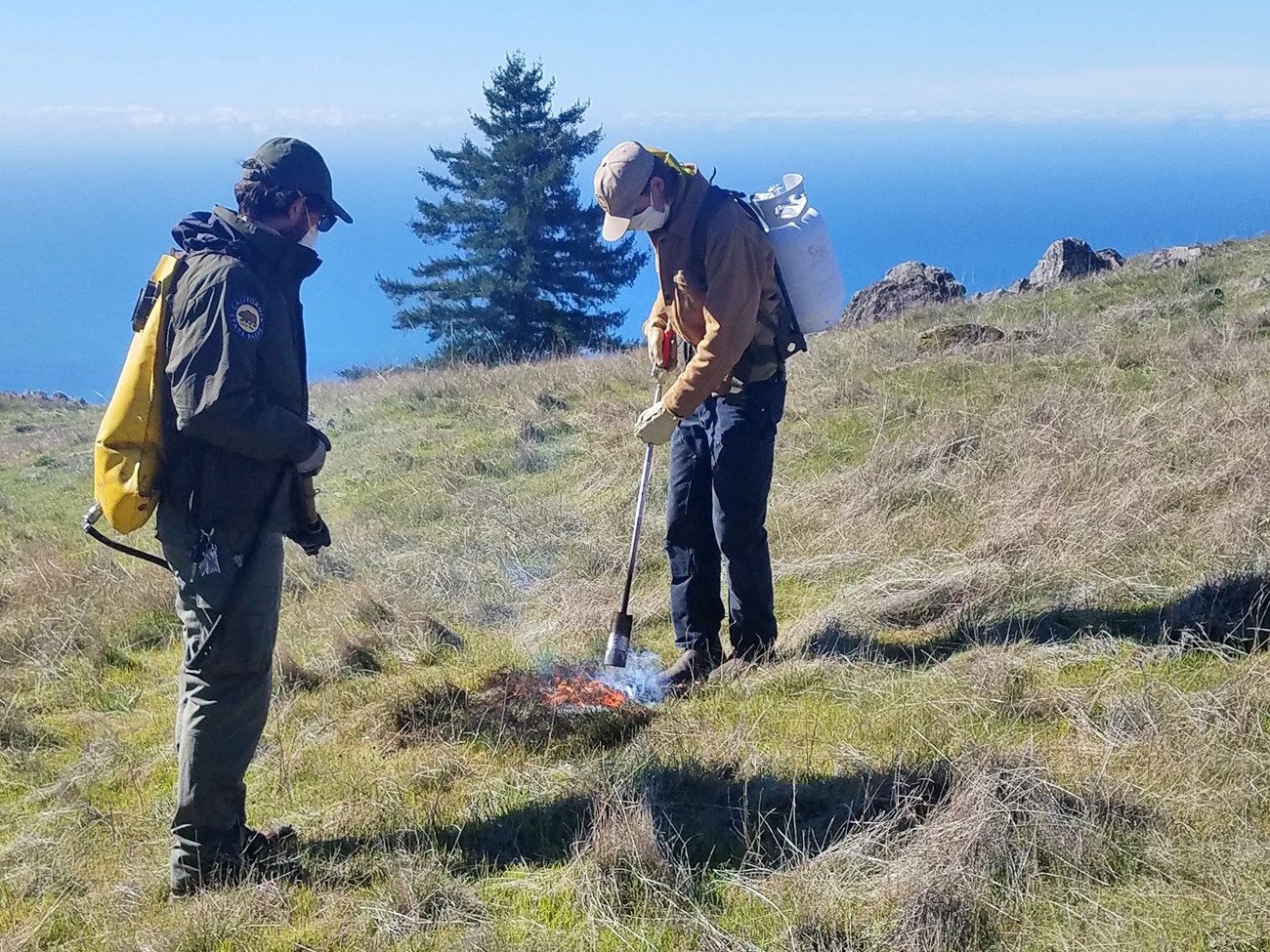Last updated: August 4, 2021
Article
Second Round of Invasive Plant Surveys on Mount Tam Yields Few New Priority Weed Populations

Rachel Kesel / One Tam
July 2021 - Brushing and flossing every day isn’t a glamorous task. But if you don’t do it, you risk serious dental health issues. So it is with Invasive plant surveys. They aren’t flashy, but the health of ecosystems depends on them. On Mount Tamalpais, invasive plant surveys are coordinated by the One Tam Early Detection and Rapid Response (EDRR) program. It’s methods are based heavily on the San Francisco Bay Area Network’s Invasive Species Early Detection Program protocol, and program partners include Golden Gate National Recreation Area, Mount Tamalpais State Park, Marin County Parks, and Marin Water. In mid-June, the EDRR program finished a second cycle of early detection surveys along Mt. Tam’s road and trail network.
This second three-year EDRR survey cycle began in 2019. To finish it, survey teams had to make up for ground lost in 2020 due to COVID-19. They did just that. Since March 15, 2021, three staff from the Golden Gate National Parks Conservancy surveyed over 150 miles of roads and trails! Golden Gate’s Redwood Creek vegetation crew also stepped up to help in their watershed to ensure all National Park Service lands would be covered. Additionally, Marin County Parks staff covered extra miles on their land to allow Conservancy staff to focus on the remaining partner lands.
During the surveys the teams found relatively few new priority weed populations. Of those they did find, nearly all have been treated by agency or Conservancy staff as part of a rapid response paradigm. Notable weed occurrences from 2021 include a single plant of hanging sedge on Old Railroad Grade, a new patch of barbed goatgrass on Carson Ridge, and a single cheatgrass plant at Bootjack Campground. Hanging sedge is a grass-like species that can spread quickly via rhizomes in moist areas and smother native plants. Highly invasive barbed goatgrass and cheatgrass are tolerant of serpentine soils, and pose a threat to serpentine endemic species.
Finding fewer weed populations in this cycle is an early sign that the last EDRR cycle was effective. Due to the program’s efforts, today's highest priority invasive plants are being found and removed before they’re able to cause serious harm. Partner agencies’ ongoing attention to managing invasive plants and practicing good field hygiene are undoubtedly helping as well.
For more information
- See the 2020 Beyond Boundaries report for more results and methods from the first cycle of surveys
- Contact One Tam Conservation Management Specialist Rachel Kesel
